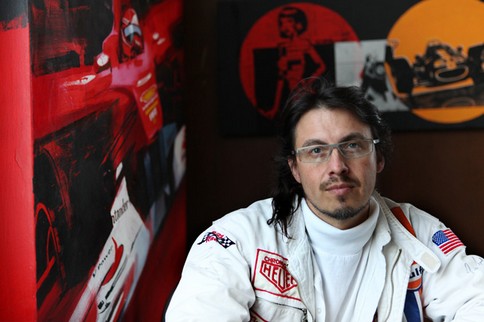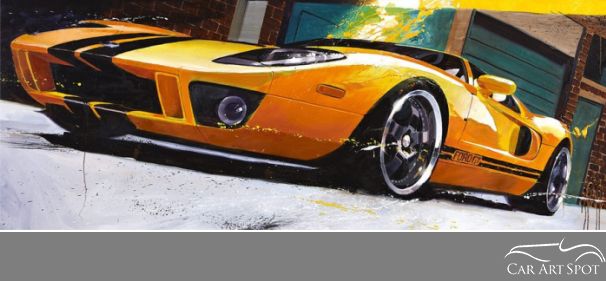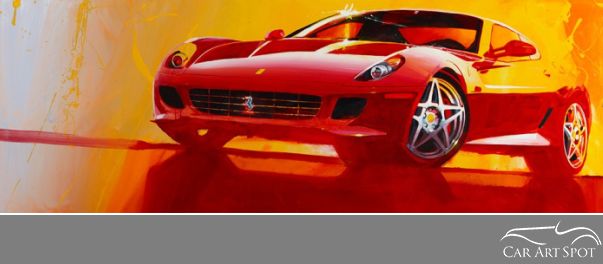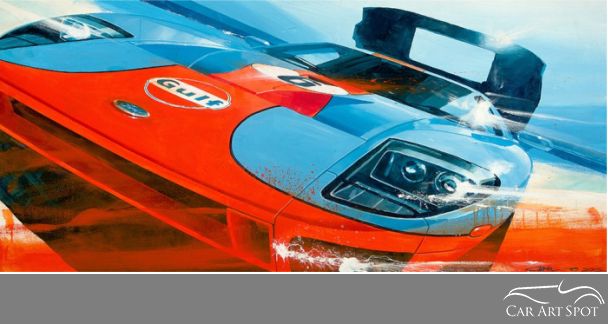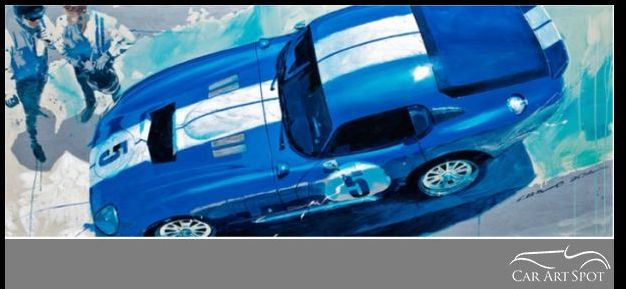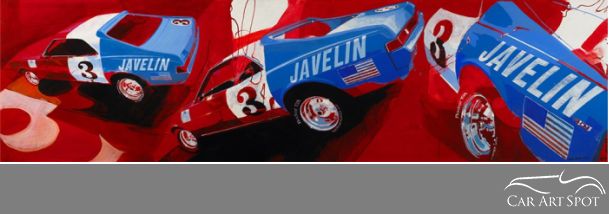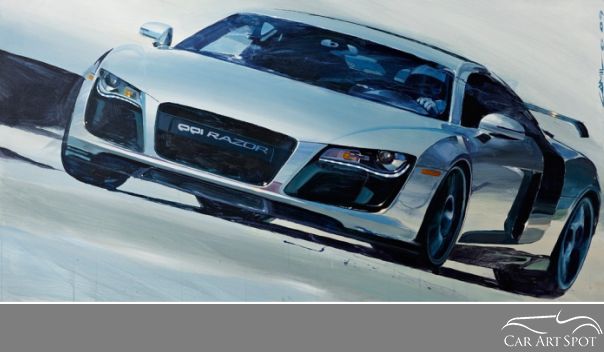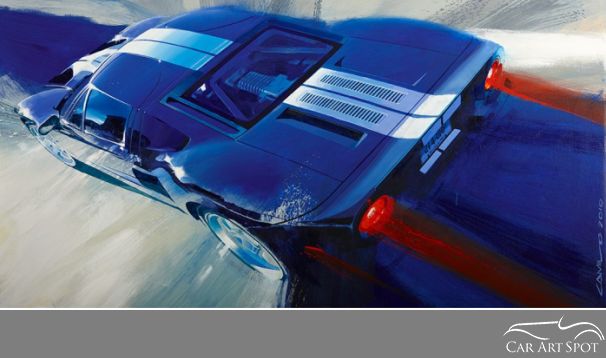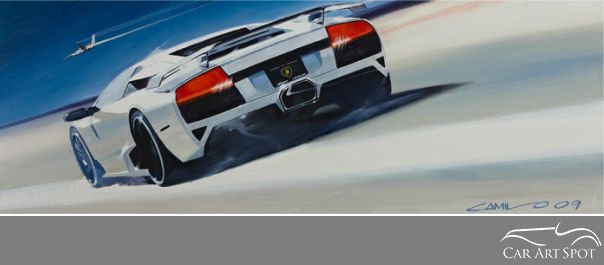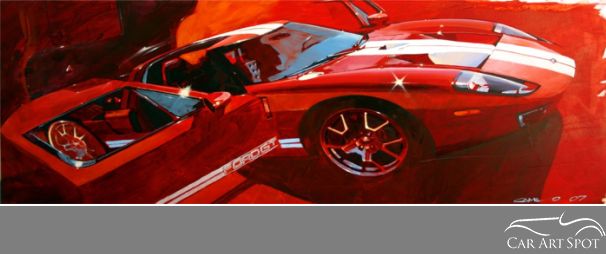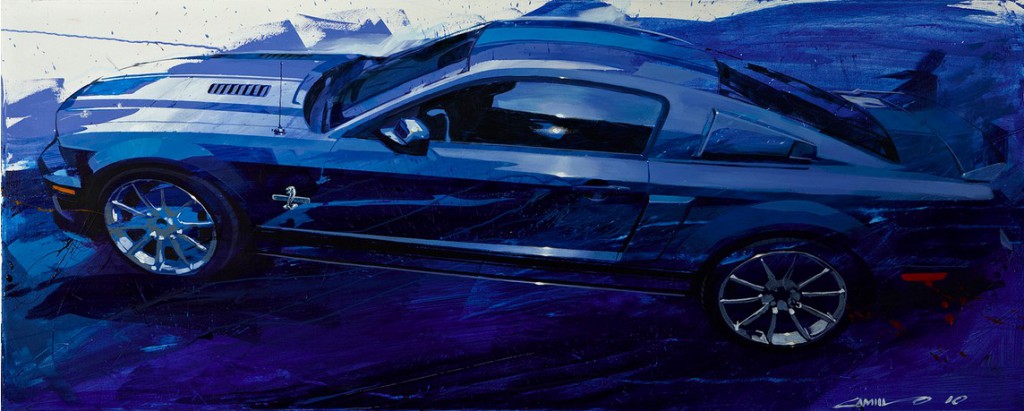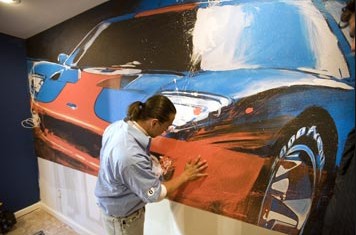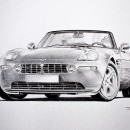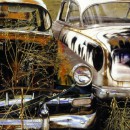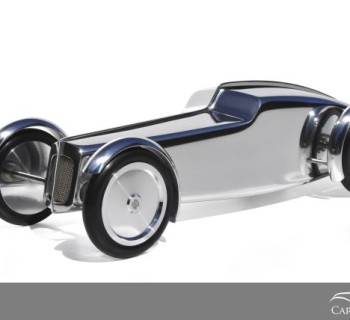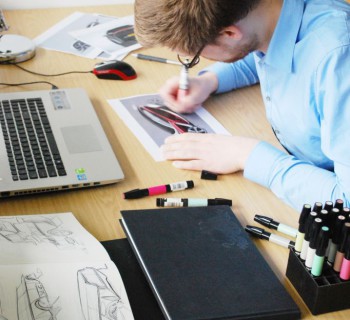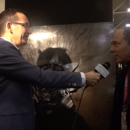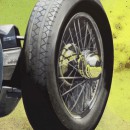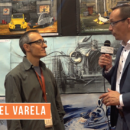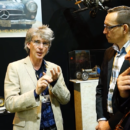As Chief Designer of the Ford GT and professional automotive artist, Camilo Pardo is very well known and gets plenty of media coverage wherever he goes. So what else is on his bucket list?
Your work reflects so much liveliness and has a passionate appearance. Is that a reflection of who you are?
Yes, my artwork, paintings, fashion and furniture design, and all my automotive design all share the same kind of energy. So it's consistency for sure and it's my personality.
You are one of the few who has such a broad range of topics for your art. Do you do a lot of experimenting?
I started as a fine artist and have painted all my life. So that's my foundation. I went to design school to be a designer. When you are taught industrial design, you have a very good understanding of how everything is fabricated. If you get into automotive design, it's probably one of the most difficult products there is. It's much more relaxing to do furniture or fashion design and less demanding. You can do those to have a good time and enjoy yourself. Then the paintings are always improving because of the illustration techniques, which are necessary for all the other design areas. So really they are all tied together.
So you actually started in fine art, did the designing aspect come second?
Well I always wanted to design cars as a little kid. To become an automotive designer, you have to take specific training. To become an industrial designer, you have to go to college. In that college they teach you all the foundations that everyone needs, whether you are a fine artist, a graphic artist, an interior designer, automotive designer or a product designer. You still have to take all the same fundamental classes of art, colour composition, design theory, 3D composition etc. You have to do very well in all of them to achieve any of the departments. So we all have the same foundation.
I grew up in the time when the most amazing cars were coming out; Mustangs, Corvettes, Cougars, Challengers, Shelbys, Ferraris
When did you start creating automotive art? Were you always into cars?
Yes, my mother was a painter and when I was young, she would let me paint and I painted a lot. I grew up in the late 60's, early 70's and those were the years when the most amazing cars were coming out; Mustangs, Corvettes, Cougars, Challengers, Shelbys, Ferraris, everything was amazing at that time. Those cars were just impossible to miss on the streets and had bright colours and were very dynamic. I don't know, I just had a natural gravity to those cars and racing. So with my interest in painting and cars, I knew from a very early age that I wanted to be a car designer.
The ultimate dream of any designer is to design a sports car. You were the Chief Designer for Ford GT. How was that for you?
When I was in college, we were all excited about Ferraris, Shelbys etc. and racing. So that was our dream. We admired people like Pininfarina and Bertone and basically, we wanted to work really hard, be the best in the class, graduate, get a job and be the best in the company and do some amazing sports cars which would give us international recognition. So that was our mission and our target and we were all very consistent. But you know, after teaching and watching young students give demonstrations in college and schools, I don't think that everybody dreams that anymore. They like cars, like SUV's and stuff and that's fine, but I don't understand how you can't love a Pininfarina or Ferrari. That is the ultimate and if you can get on a program where you do a concept car like that and then bring it in production, then you've basically achieved your goal in life. I was lucky. Everything worked out. I worked very hard and gained the confidence of my directors and vice presidents and they put me on a lot of great projects.
I am intrigued by that because you already achieved recognition at an early stage in your career. Do you have a particular formula to achieve success? You already mentioned the hard work you put in.
I graduated from college with an advanced portfolio and was on a project immediately after college. That was in 1985 and the vehicle never completed production and was cancelled. Then in the advanced studio, my director had me working on the GP90 which finished as a concept car. About five years later, my director put me on the Ford GT40 because I was always in the advanced studio and always pushing very hard. When I got onto the GT40 programme, I already had 15 years in the company. So it didn't come that early and that was when I finally got promoted to manager and chief designer. So it did take quite a while. Fifteen years is long time to reach those levels. You need to just work hard. It's hard to be the best.
Is that the advice you would give to young automotive artists and car designers? Keep working hard?
Yes. When I teach, that's what I tell them. When they pull me in for a demonstration or interview, I tell them exactly what they need to do to make it in a very competitive world of automotive design.
You use so many different colour schemes and there seems no end of variation that you come up with.
There are lots of colours available. That makes for a lot of different compositions and then you have race cars. You call this a Livery, which is the graphics of a race car. The Gulf GT40 is a livery. So that gave me other opportunities for my paintings. I just finished one which was the major car that ran in Le Mans in 2010. I had two of the Heritage, pretty much the Golf GT's and after having two of those, I thought well I'm not going to buy a 3rd one, it's getting a bit monotonous. I can continue with a signature series or I can do one of a kind for GT's in different colours. When I'm done driving them and showing them at different shows and doing magazines and video stuff with it, I can sell it to a collector. So I can continue doing that with Ford GT's forever.
There are so many different perspectives that you paint this car in. Is that because you know this design like no-one else?
Yes I know the design really well and I photograph it all the time if I am going to do a specific car for clients. Because I know the car so well, when I photograph it, I actually modify it. I redesign it a little bit but not too much. I just make it better. I do that with every car I paint. I modify it just a little bit but not to the level where anyone would notice. It looks better than in real life and it looks the way they imagine it.
Can you give an example of which elements you modify?
The wheels should be a little bit bigger, the wheel open moons should be a little bit larger, the roof should be a little bit lower. It depends on the perspective. There are certain things that should be adjusted in order for the car to look its ultimate, very lean, very slick, the very best it can absolutely look in that photo or that image that you are going to turn into a painting.
The car paintings you create have so much energy. What is it that you want to express with your artworks? Is there something you want to tell your audience or the observer?
Yes, I like to express the energy growing out of the painting. Whether the car is moving or stationery, I still try to give it a degree of movement and drama. Most of the time, the vehicle is quite large in the composition and sometimes it's so large it doesn't even fit in the picture. It's like it's around you almost because it's so much in your face. Sometimes I do have background around the vehicle which helps create atmosphere.
Do you use oil or acrylic? Which techniques do you use the most?
For many years in high school, I learned how to use watercolour with an amazing watercolour structure. I took those water colour abilities into quash painting that we do a lot in design but which is now an historical method. I painted a lot of Formula 1 and loved the medium, it's fast. You have to be on top of it with the technique I use. But when you have finished the painting, you are still not done because you have to buy a frame and glass etc. It's too much work. Then I thought why do all that, why not just stretch canvas, with the edges all perfectly done etc. Then when you finish the painting, you are done. You just sign it, put a wire on the back and you hang it. Many contemporary pieces in museums are just the canvas with no frame. That's what I go for, a very contemporary canvas that you just hang on the wall. I went into oil as a little kid and painted in oils for years until 2009 when I wasn't with Ford anymore and began working independently. Oil is very toxic because you have to use turpentine, which is exposed all over the studio and it's really bad for you. It's also a lot of work cleaning the brushes. I can have the same effect with acrylic. There's a lot of people I admire who paint in acrylic. So I switched and now I use water and it's simple.
How do you come up with new ideas for an artwork?
Most of my work these days is a commission. So it's the customers idea, their car, what they want. Unless I do an exhibit for a gallery. Then I do 25 new pieces of whatever I want it to be. The last time I did an exhibit, it was all figurative.
If you do a commission for a car, does it restrict you in your creative expression?
No, I love painting cars. I get really excited when I go to a race. I photograph all the cars I want to do paintings of. When I see them around me, there are lots of compositions going on in my head continuously. I want to capture everything and I shoot like crazy with my camera.
Do you use the photographs as reference?
Yes, there's different ways of going about it. Sometimes I do a straight plan deal, looking straight down on the car. I usually just look at a lot of different pictures and then paint it on the canvas and sometimes I go through my photo's. I take photo's specifically for the angle for the reference for that painting. It's very on target specific.
Do you work together with other artists to inspire each other?
Yes I usually do. Right now, I am working with a girl on the other side of the studio and she does large portraits. She has a lot of energy and paints continuously. She does amazing work. I like to be in that environment where someone works a lot and does great work. It's very difficult to be in the studio with people who are trying to do as little as possible.
I can imagine that your days at Ford Automotive were very vibrant. All young designers working hard to get noticed.
Yes the designers work really really hard. It's a very competitive atmosphere. Every time there's a project, there's like three designers and they get told to go and sketch. Then they put up all the sketches, look at them and at the end of the week, they look at whose is the best. Eventually they pick the best ones to go into the model. Then they do a couple of models, then those two models will get developed and then eventually they go with one. So it's competitive all the way to the end.
Is that something you miss or are you happy not to go through that anymore?
It was life. That's just how it was. It's great when you win. It sucks when you don't.
I can imagine it brings out the best in you.
Well sometimes it works and sometimes it doesn't. Not every painting is great. You do two good ones and you think you are on a roll and the next one is horrible.
What do you do when you create a painting you don't like. Do you destroy it?
I paint over it or work very hard to fix it. Sometimes it works and sometimes it doesn't. I just did two paintings recently and one I loved very much and the other, I liked but something was missing. So I spent some time away from it and then went back and tried to break it down and figure out why I didn't like it. The client was waiting for it, so I had to get on it.
Do you work on several projects at the same time.
Yes usually several. I'm just getting to the point now where I am working with another designer. This is interior design for a restaurant . She's a great designer and we can collaborate together very well. She knows I am very busy but I don't want to miss out on any work, so she can work with me. She produces a lot, so it's great.
What does a normal day in your life look like Camilo?
Well, I try to do the 9-5 stuff and do all my phone calls and talk to people who are at the office at that time. Those are also the hours I have to go and buy supplies, paint canvas, hardware etc. Then at night, with a bottle of wine, I can start my design work. I paint, get creative and try some experiments with some designs and sketch them out and do them on the computer, which is my creative part. I accelerate as it gets later in the day, which is totally opposite from people who only work from 9-5. The people I used to work with would get to work at 6.30 a.m. in the morning and get really excited . I don't feel like anything at that hour, I feel like hell. You have your 8 a.m. meetings and have to get your head together and organize and structure your studio. It's a lot of design and engineering together and then in the afternoon, everything starts rolling and sometimes it's hard to leave around 5 or 6 after being there all day. For most people like those guys, the engineers and all that, they kick butt, get heavy in the morning and throughout the day, and then when they go home, they don't want to do anything. They just want to go home, hug the kids, see their wife, have dinner, grab a beer and watch the game. That's the point where I am accelerating. I am the opposite. I start slow in the morning and then in the evening, I am going really hard. Their designs are not going to be better at 6 in the morning or 6 in the evening. It doesn't matter what time it happens.
That's very interesting. I can imagine in the evening you are less disturbed or distracted by others.
No, I don't care. I'd rather have a lot of people around.
Are you in a flow state of mind when you are designing?
I just work and if anyone gets near me, I put them to work. I give them something to do.
Do you still have something on your bucket list that you want to do?
I still want to do one more Shelby. There are some cars that would be great to do but I think every designer would love to do a Ferrari at some point. When I had friends there, they wouldn't hire me. I don't think they wanted me around because they wanted the whole pie to themselves. They would much rather hire a new guy from college with no background and no reputation than to have somebody who has designed a Ford GT and ready to go like hell. Wherever I go right now, if I go to any of the competitors, they immediately write about it and most companies don't want somebody who gets a lot of media. They want to keep it quiet. They want to control the media themselves. I get plenty of media, so wherever I go, I get a lot of media attention and that's not always good for them. I can make it good for them though.
To see more of Camilo Pardo's work, visit his website


